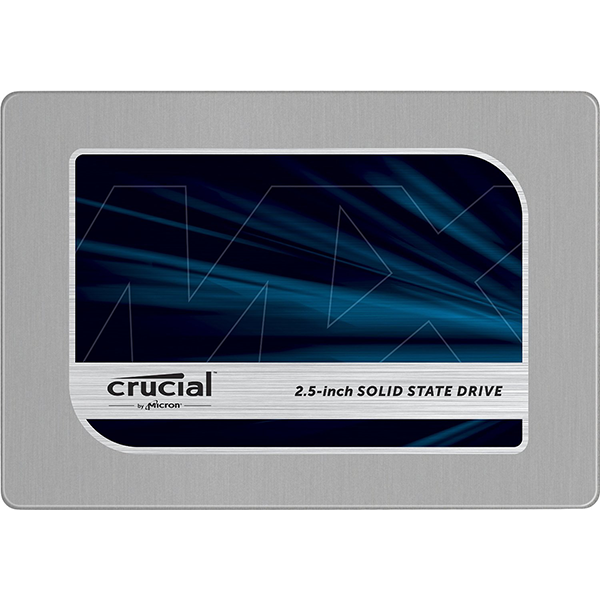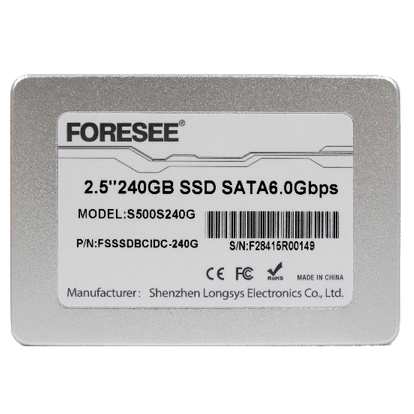Plextor M6V SSD Review
Value-oriented shoppers in the market for an SSD don't have to settle for TLC-based drives. Plextor found another way to reduce prices with two-bit-per-cell MLC: just use flash with smaller cells.
Why you can trust Tom's Hardware
Four-Corner Performance Testing
Sequential Read
To read about our storage tests in-depth, please check out How We Test HDDs And SSDs. Four-corner testing is covered on page six.
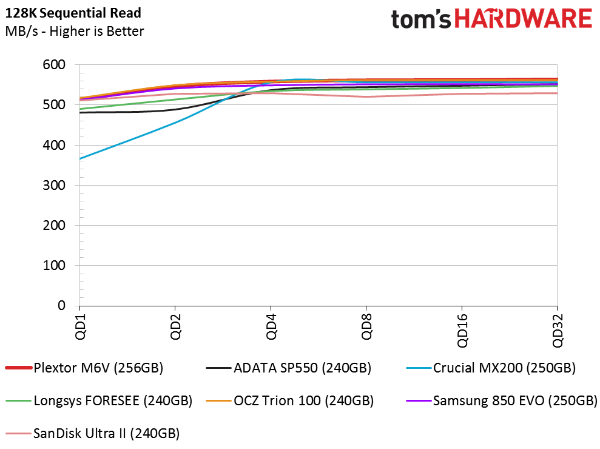

The Plextor M6V lands at the top of our sequential read chart. Though, when it comes to reading data back from flash, even the low-cost TLC-based SSDs perform really well. Writing data for more than a few seconds is what creates problems for triple-level-cell NAND. This is countered with an emulated SLC buffer that quickly fills, leaving you with dismal native TLC speeds that often trail mechanical disks.
Sequential Write
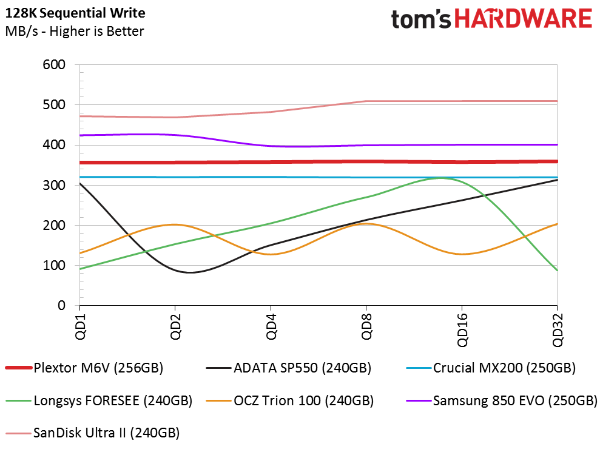
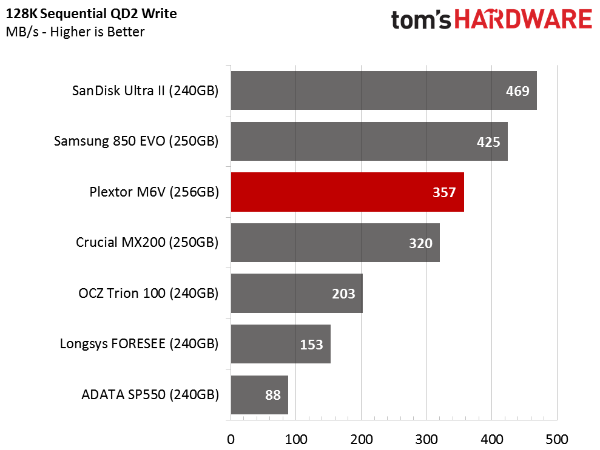
With most modern SATA-attached SSDs, we can usually link the price directly to write performance. This applies to entry-level drives armed with TLC flash. Samsung's 850 EVO and SanDisk's Ultra II are both TLC-based, though you'd have a hard time guessing it since their emulated SLC caching algorithms are so good. It doesn't surprise us to see both competitors writing sequential data faster than the MLC-based M6V.
Random Read
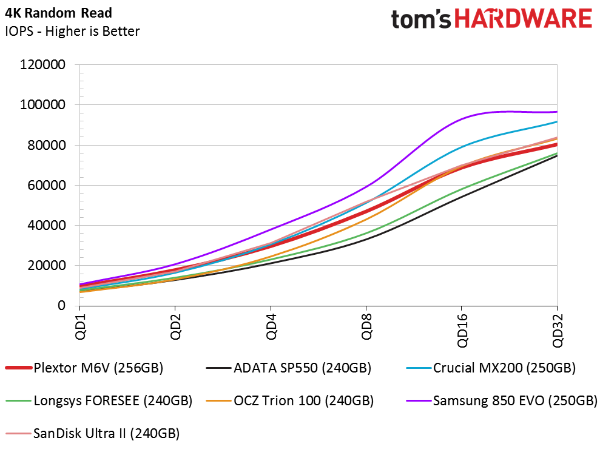
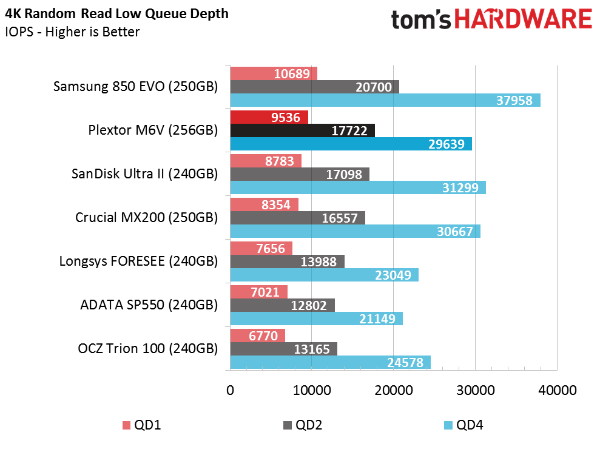
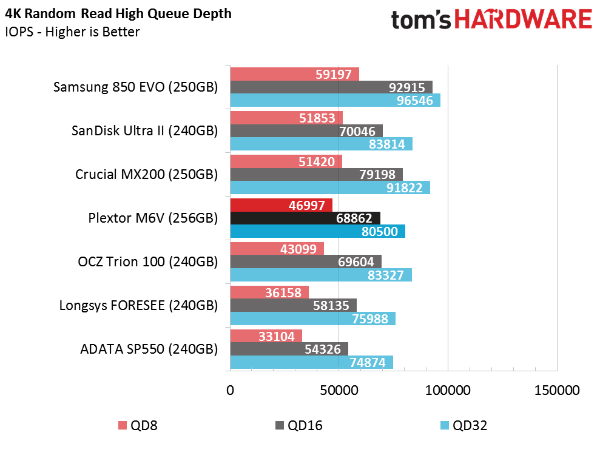
The M6V comes close to the 10,000 random read IOPS mark at a queue depth of one. That's the magic number distinguishing good SSDs from great ones. Very few client drives make it over the hump. In fact, it's rare that you'd actually need 10,000 random IOPS. But when a drive is capable of processing that many operations per second, you can expect low latency, which in turns makes your PC feel more responsive.
Random Write
Plextor's M6V lands in the top group for random writes as well. The MX200, the only other MLC-equipped model in our group, and Samsung's 850 EVO round out the top tier at all queue depths. SanDisk's Ultra II starts out strong but quickly levels out with a hard ceiling just over 45,000 IOPS.
We didn't expect the M6V 256GB to perform this well, but it's proving itself to be a solid low-cost solution. Onward with the benchmarking...
Get Tom's Hardware's best news and in-depth reviews, straight to your inbox.
Current page: Four-Corner Performance Testing
Prev Page A Closer Look Next Page Mixed Workloads & Steady State
Chris Ramseyer was a senior contributing editor for Tom's Hardware. He tested and reviewed consumer storage.
-
jimmysmitty Man I remember when Plextor was the name when it came to CD burners. You wanted a great burner? You got a Plextor.Reply
How times have changed.... -
g-unit1111 Reply17039348 said:Man I remember when Plextor was the name when it came to CD burners. You wanted a great burner? You got a Plextor.
How times have changed....
Yeah I still have my B940 that I use for backups and as long as that still works I will continue to use it. -
Quixit ReplyMan I remember when Plextor was the name when it came to CD burners. You wanted a great burner? You got a Plextor.
How times have changed....
They have to sell something, not much money in burners these days.
-
CRamseyer When Plextor handed over burner manufacturing to LiteOn things went down hill. You could buy the same model with LiteOn branding and flash it to the Plextor firmware and same a few dollars. I still have all of my Plextor hardware going back to the old SCSI 50-pin units.Reply
Remember bit to bit copying that would write the copy protection to the new media? -
jimmysmitty Quixit, I get that. It is just me reminiscing about the good ol days.Reply
17039993 said:When Plextor handed over burner manufacturing to LiteOn things went down hill. You could buy the same model with LiteOn branding and flash it to the Plextor firmware and same a few dollars. I still have all of my Plextor hardware going back to the old SCSI 50-pin units.
Remember bit to bit copying that would write the copy protection to the new media?
I do. Was one of the things that made Plextor great, as well as their very fast burning speeds. They were able to burn more reliably at higher speeds than the competition which is what made them truly great.
It is too bad that their new field is not the same, I would buy a Samsung Evo or Intel SSD over this any day. -
qlum We use quite a decent amount of them at work as the 120gb ones are quite cheap and at their price you otherwise only get old low end models you generally don't want.Reply -
kalmquist I agree that the M6V is too expensive. (As I write this, the 256GB model is $97 on Amazon.). The 240GB Sandisk Extreme Pro, which outperforms most other SATA SSD's at high queue depths and has a 10 year warranty, is now $95 on several sites (including Amazon). The 256GB Mushkin Reactor, which uses the same controller as the M6V, is selling for $80 on Newegg, and that's high because the 250GB Samsung 850 EVO is selling for $78.Reply
-
Nintendork For consumer grade use, high queu depths means nothing, most the use as an OS-gaming drive revolves around QD 1-4.Reply
The 850EVOs offer twice the total written capacity (and it can be more than that). -
mapesdhs Yet another pointlessly expensive lesser grade SSD. The 256GB M6V is 81 UKP here, whereas the 850 EVO 250GB is less than 60. Why on earth would anyone buy an M6V?Reply
Ian.

